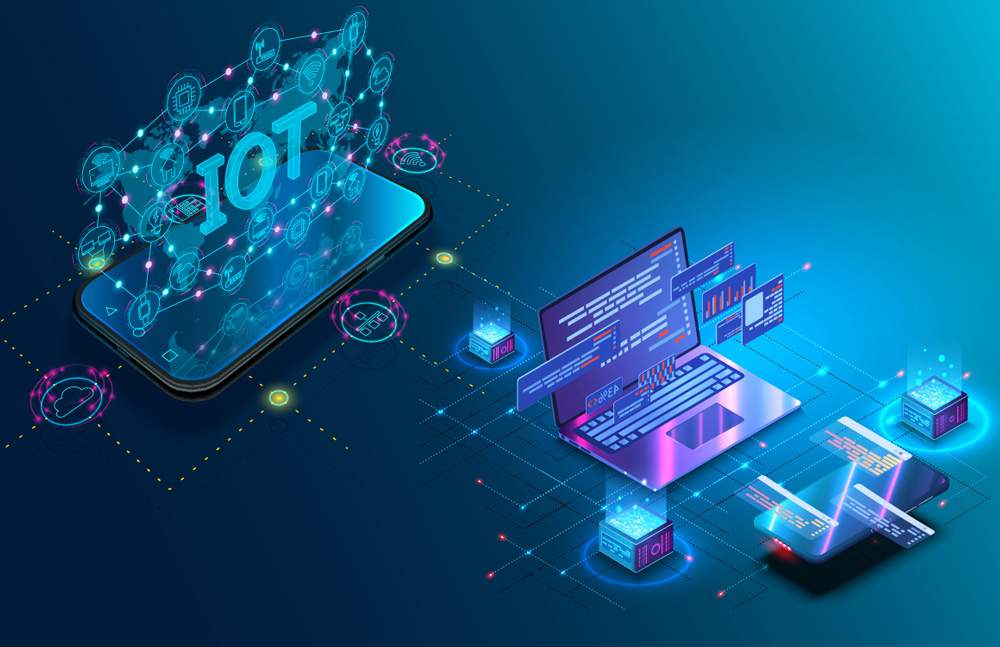The integration of machine learning with IoT devices is revolutionizing how we interact with technology. This combination is not only boosting the intelligence of devices but also enhancing their ability to operate autonomously. As we delve into the world of machine learning for IoT devices, it’s essential to understand the profound impact it has on connectivity and data processing.

Understanding the Basics of IoT
The Internet of Things, or IoT, refers to the network of physical objects embedded with sensors, software, and other technologies to connect and exchange data with other devices and systems over the internet. These devices range from ordinary household objects to sophisticated industrial tools.
The Role of Machine Learning in IoT
Machine learning plays a crucial role in processing the massive amounts of data generated by IoT devices. It helps in making sense of this data by identifying patterns, making predictions, and improving decision-making processes. This capability is vital for developing smarter, more autonomous IoT devices.
Enhancing Data Analysis
One of the primary benefits of integrating machine learning with IoT devices is enhanced data analysis. Machine learning algorithms can process and analyze data much faster and more accurately than traditional methods, providing valuable insights that can be used to optimize operations.
Improving Operational Efficiency
With machine learning, IoT devices can operate more efficiently by learning from past data and making adjustments in real-time. This capability reduces the need for human intervention and allows devices to perform tasks autonomously.
Applications of Machine Learning in IoT
The applications of machine learning in IoT are vast and varied, ranging from smart homes to industrial automation and healthcare.
Smart Homes
In smart homes, machine learning helps in managing energy consumption, enhancing security, and improving user experience by learning occupants’ behavior and preferences.
Industrial Automation
In the industrial sector, machine learning improves predictive maintenance, quality control, and supply chain management. It enables factories to operate more efficiently and with less downtime.
Healthcare
In healthcare, IoT devices equipped with machine learning capabilities can monitor patient health in real-time, predict potential health issues, and assist in personalized treatment plans.
Challenges in Implementing Machine Learning for IoT Devices
Despite the benefits, there are challenges in implementing machine learning for IoT devices, including data privacy concerns, high computational requirements, and the need for continuous updates and maintenance.
Data Privacy and Security
Ensuring the privacy and security of data collected by IoT devices is a significant challenge. Robust security measures must be in place to protect sensitive information from unauthorized access.
Computational Power and Resources
Machine learning algorithms require substantial computational power and resources, which can be a limitation for some IoT devices with constrained capabilities.
Continuous Updates and Maintenance
Implementing machine learning for IoT devices requires continuous updates and maintenance to ensure the models remain accurate and efficient over time.
The Future of Machine Learning and IoT
The future of machine learning and IoT is promising, with advancements in technology expected to drive further innovation and adoption across various industries.
Emerging Trends
Emerging trends in machine learning for IoT include edge computing, which brings computation closer to the data source, reducing latency and improving performance.
Potential for Growth
As technology continues to evolve, the potential for growth in the integration of machine learning and IoT is immense, with new applications and opportunities constantly emerging.
Conclusion
The integration of machine learning with IoT devices is transforming the way we live and work, making devices smarter, more efficient, and more autonomous. As we continue to explore the possibilities, the potential for innovation and progress is limitless.

FAQ
What is the role of machine learning in IoT?
Machine learning enhances IoT by enabling devices to analyze data, learn from it, and make informed decisions autonomously.
What are some challenges in implementing machine learning for IoT devices?
Challenges include ensuring data privacy, providing sufficient computational resources, and maintaining the models over time.
How does machine learning improve IoT devices?
It improves IoT devices by enhancing data analysis, increasing operational efficiency, and enabling predictive capabilities.
For more information on IoT development, you can visit Travancore Analytics or explore Product School’s insights.
Learn more about IoT product development, AI integration in IoT, and voice recognition for IoT at BL International Company.


